How to Save/Convert WEBP to PNG in Windows 10?
The WebP format is a modern image format that is developed by Google to reduce the size of the image for online storage space. This format is designed to make the web pages faster. The size will be smaller but the quality will not be sacrificed for this compression. However, some of the programs and browser still does not support the WebP format. It is much better to get the image in the PNG format than the WebP for editing. In this article, we will show you methods through which you can download or convert the WebP images as PNG.
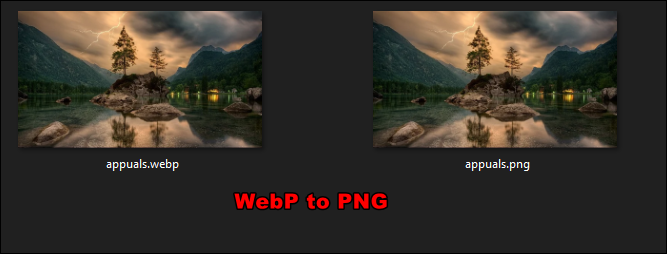
Converting or Saving WebP to PNG
There are several different methods through which you can download or convert the WebP images as PNG. Depending on your situation, you can use the one that is much more suitable for you. Some of the browsers do not support the WebP formats, so you can open the same link in the browser to save the image in a different format. There can be many other methods that you can use, but we are listing the ones that we tested and got a good result back.
Method 1: Using the MS Paint Application
The easiest method to convert the WebP image is by using the image editor. Most of the image editors provide the ability to save one format to another. However, the MS Paint application can also be used to do the same. It is the default application that comes with the Windows operating system. Therefore, the users don’t need to install any third-party image editor for this method. Follow the below steps to see how it works in MS Paint:
- Open the MS Paint by searching “paint” in the Windows search feature.
- Now click on the File menu and choose the Open option.
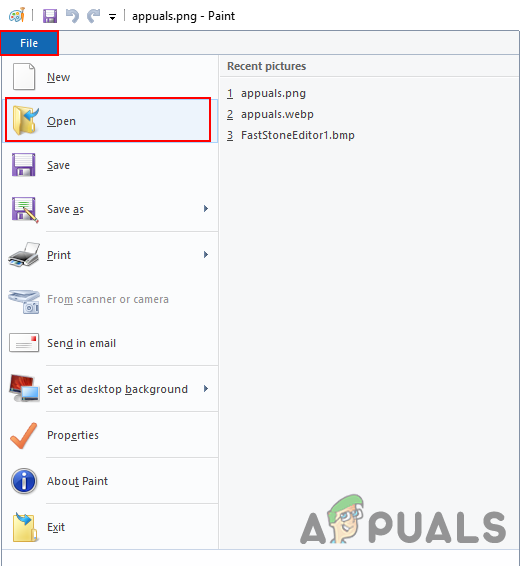
Opening the WebP file - Choose the WebP image that you want to convert to the PNG and open it.
- Now click on the File menu again and then choose Save As > PNG Picture option. Rename the file and save it to your system.
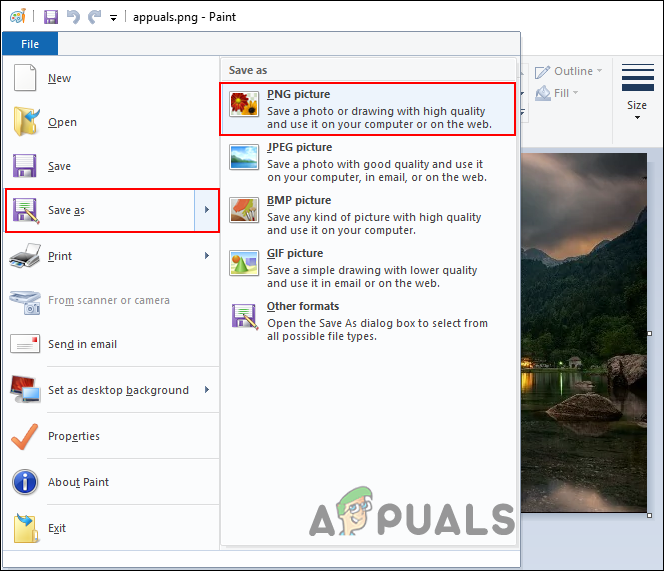
Saving the file as PNG - Now the file will be in PNG and you can open or use it for your needs.
Method 2: Using the Online Converter
Nowadays, most converting processes are done through online sites. This saves both time and storage for the users. Many sites provide the conversion tools for images. Every site will have a different conversion tool with different features. You can use the one that you are familiar with or like to use. In this method, we will be demonstrating the EZGIF site for conversion of WebP to PNG.
- Open your browser and go to the EZGIF. Now click on the Choose File button and select the WebP file that you want to convert.
Note: You can also directly paste the URL of the image to convert it. - Click on the Upload button below to upload the image.
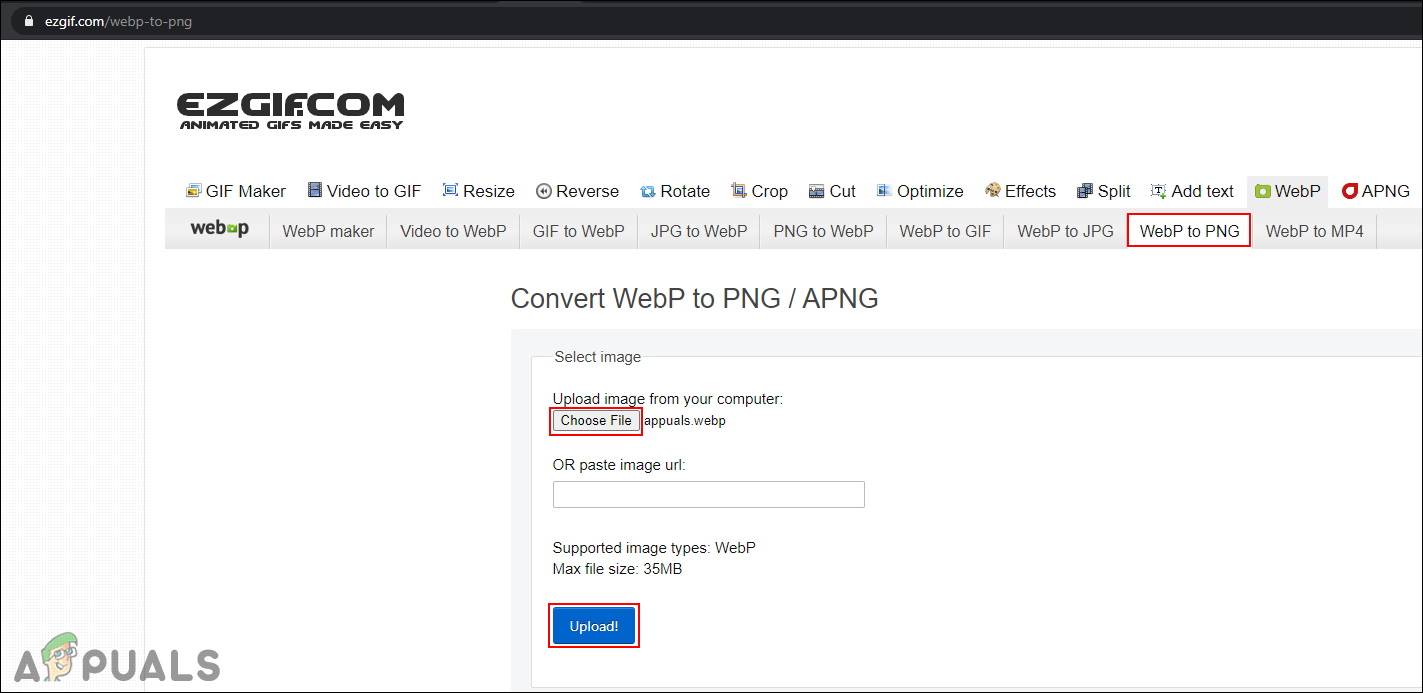
Uploading the WebP file - You can also choose other settings for the image before converting or you can simply click on the Convert to PNG button to convert it.
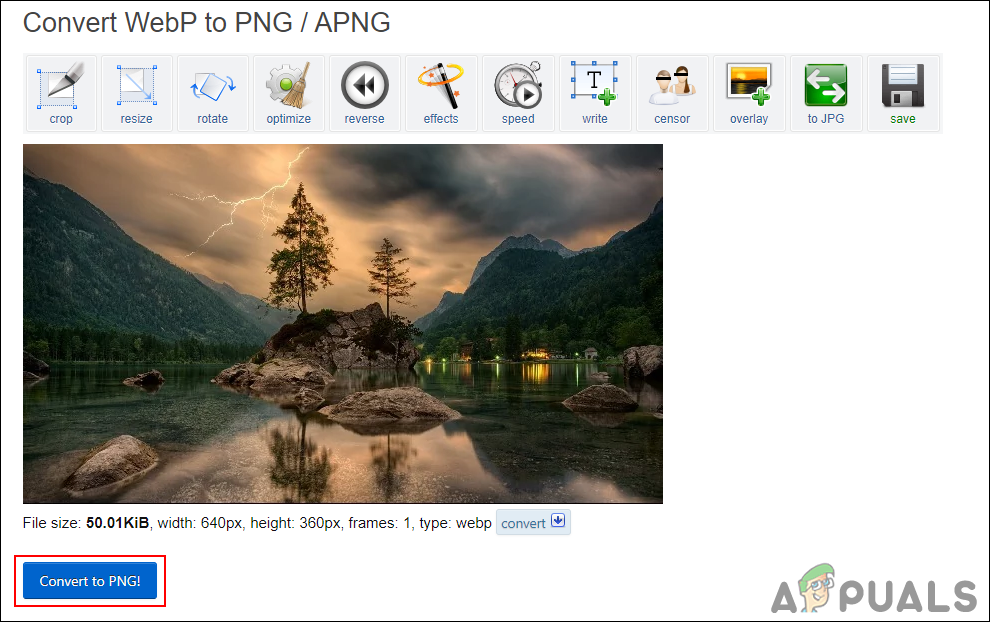
Converting the file to PNG - Once the image is converted, click on the Save icon to download the PNG file to the system.
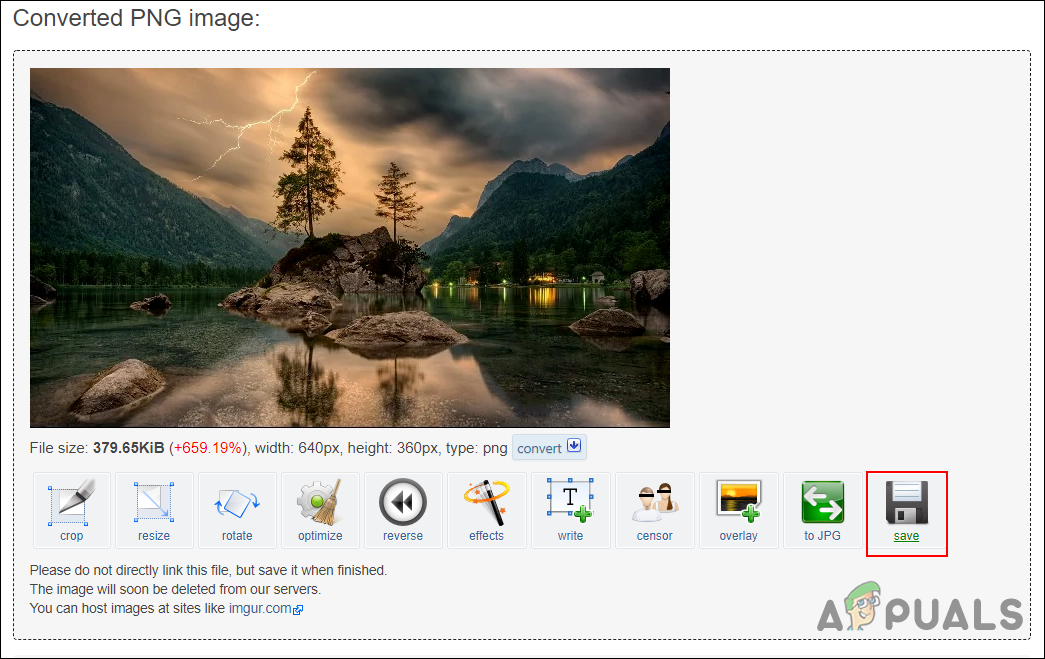
Saving the Image to the system
Method 3: Using the Offline Converter
Similarly, to the online converter, there are also many offline image converters. Users that do not have Internet all the time can install an offline converter for any time use. There are many converters that are free and some others should be purchased. However, you can also use the trial version if you are only using it for a short time. We will be using the Pixillion image converter in this method as shown in the below methods:
- Go to the NCH Software site and download the Pixillion Image Converter software by clicking on the Start Download button.
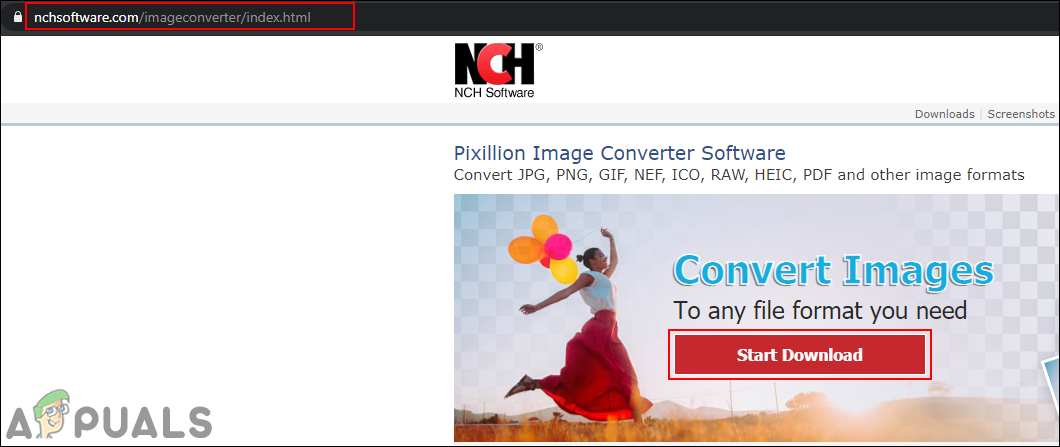
Downloading the software - Follow the installation process and install the application on your system.
- Open the software and click on the Add files button. Choose the WebP file that you want to convert.
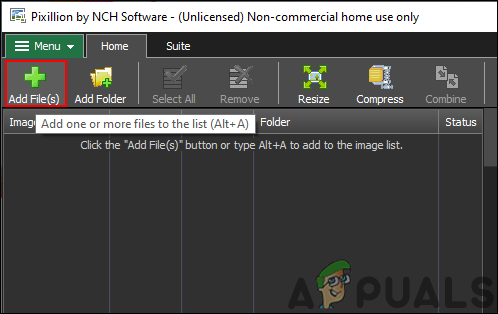
Adding the file to the application - Select the output folder and output format (PNG) for your image. Now click on the Convert button to start conversion.
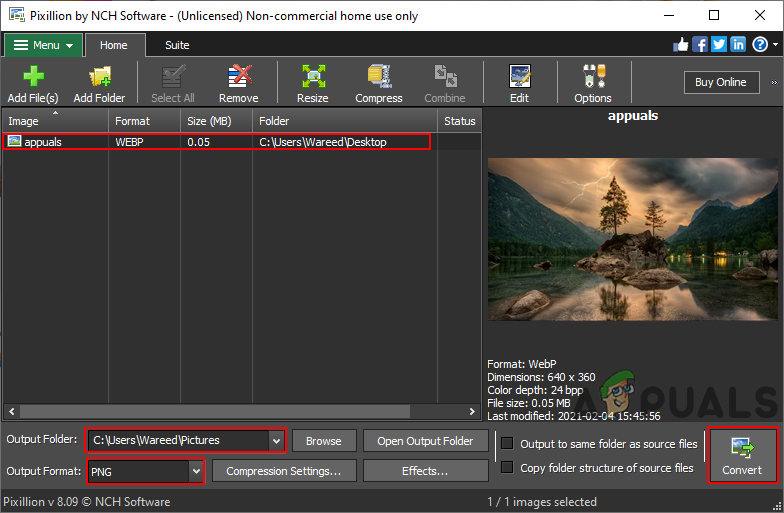
Converting the file to PNG - Once the conversion is completed, you can view and open the PNG file in your output folder.
Method 4: Using the Command Line
Google also provides the libwebp codec distribution that can be used to convert the WebP format. By using this, you can convert other formats to WebP or convert the WebP to other formats. Users can use the dwebp executable file to convert any WebP to a PNG file in the command line. Using the command line can be a bit difficult for some users, but others may like this method than others. You can also check the use of the commands on their site.
- You can download the libwebp codec from Google that includes an extensive encoder and decoder API. Choose the latest one at the bottom and the format for your operating system.
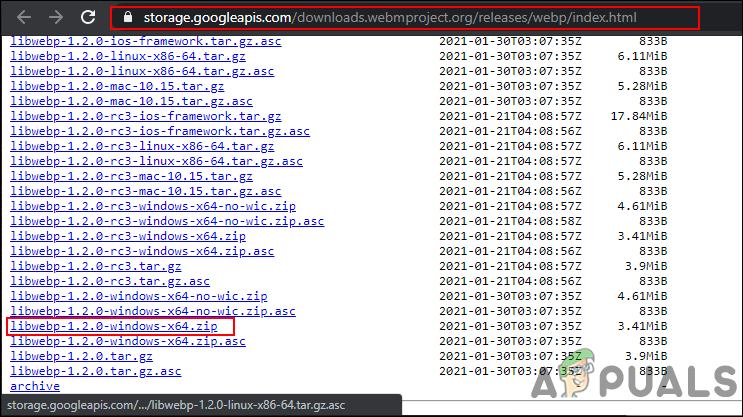
Downloading the codec - Once downloaded, you can extract the file to the desktop or any location you prefer.
- Now open the Command Prompt by searching CMD in the Windows search feature.
- Change directory to the folder where your WebP files are located. In our case, our file is located on the desktop.
cd desktop
- Now paste the path for “dwebp.exe“, which is located in the bin folder of the libwebp. Then type the name of the image with extensions as shown below:
C:\Users\Wareed\Desktop\libwebp-1.0.2-windows-x86\bin\dwebp.exe appuals.webp -o appuals.png

Converting the file to PNG using CMD - Press the Enter key and the file will be converted and saved as PNG to the desktop.





